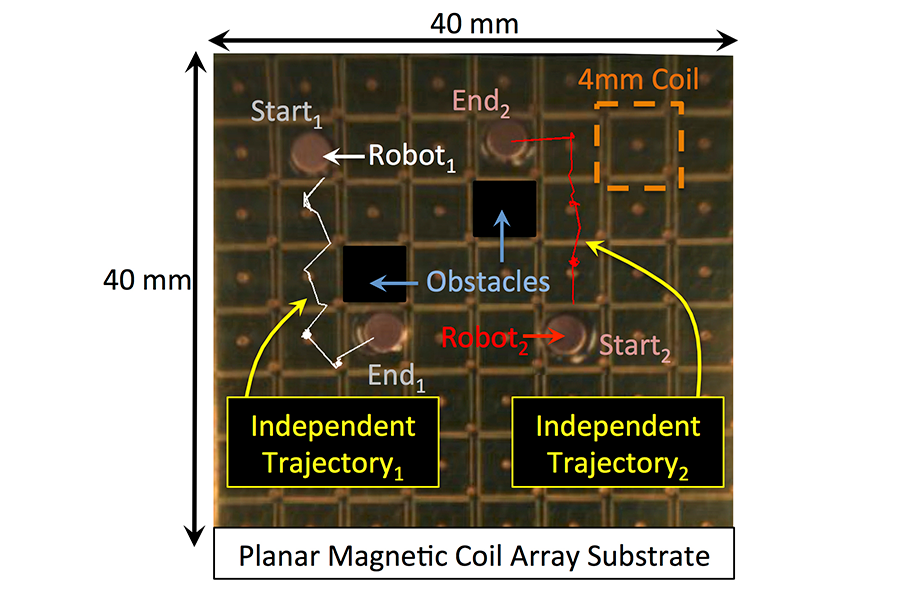How do you get tiny robots to work together? A magnetic force field
Loading...
Researchers at Purdue University have developed a method, which they call a “mini force field,” to use magnets to propel microbots, which will one day work in groups to manufacture tiny components, to each do different tasks.
Engineers are trying to replicate on a micro scale what large robots can do on a regular-sized automated assembly line: work on different tasks at the same time. Microbots can already work in groups to perform the same task, says David J. Cappelleri, an assistant professor in mechanical engineering at Purdue. The trick is to be able to give them independent assignments.
“Right now, they all have one signal and they all respond the same way,” Prof. Cappelleri told The Christian Science Monitor in a phone interview. “We can say, ‘Ok, this one goes forward, this one goes to the left' and we can have them do that at the same time,” he says.
Cappelleri and his team describe their technique in a paper published last month in the journal Micromachines.
Their robots are 2 millimeters in diameter, about twice the size of a pinhead, thought they hope to get them down to 250 microns in diameter, the size of a dust mite. The tiny bots move by sliding along a substrate with copper magnetic coils printed onto it, similar to printed circuit boards.
Engineers use a computer to vary the strength of the electrical current in the coils, thereby moving the robots in different directions with attractive or repulsive forces.
"The robots are too small to put batteries on them, so they can't have onboard power," Cappelleri said in an online statement.
"You need to use an external way to power them. We use magnetic fields to generate forces on the robots. It's like using mini force fields," he explained.
Cappelleri hopes that in about five years, the microbots will be able to build the tiny components that go into microsensors or other small mechanisms used in the automotive or aerospace industries. Another application is in the biomedical industry, where the microbots could work inside petri dishes, sorting, moving, and identifying cells.
“A lot of time it’s done by hand,” Cappelleri told the Monitor. “If you have robots that can do it for you, it can drive the cost down,” he said.







